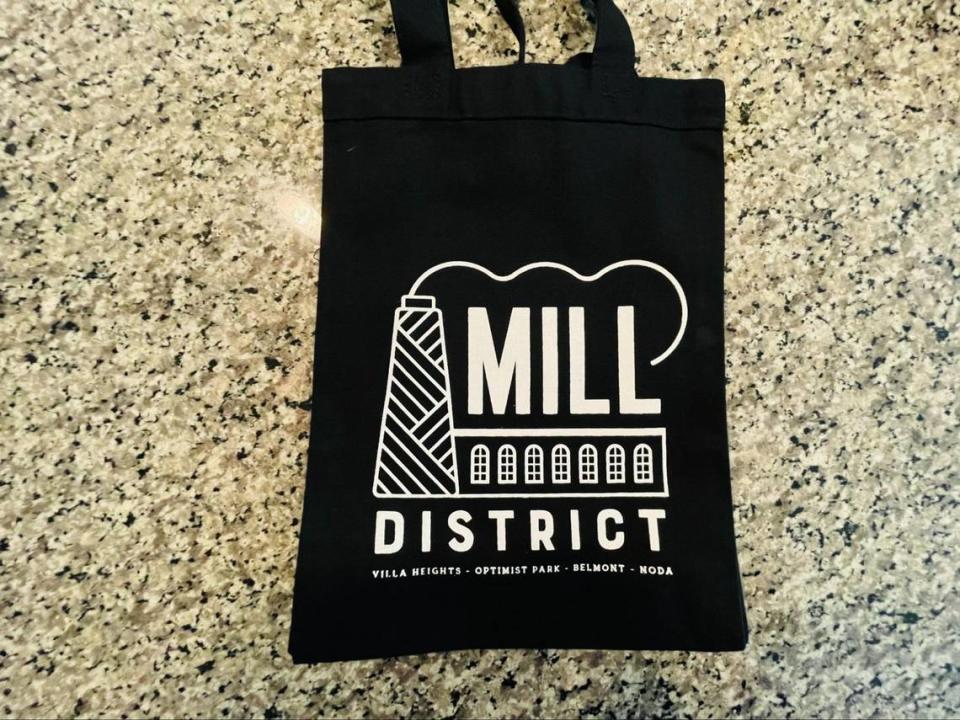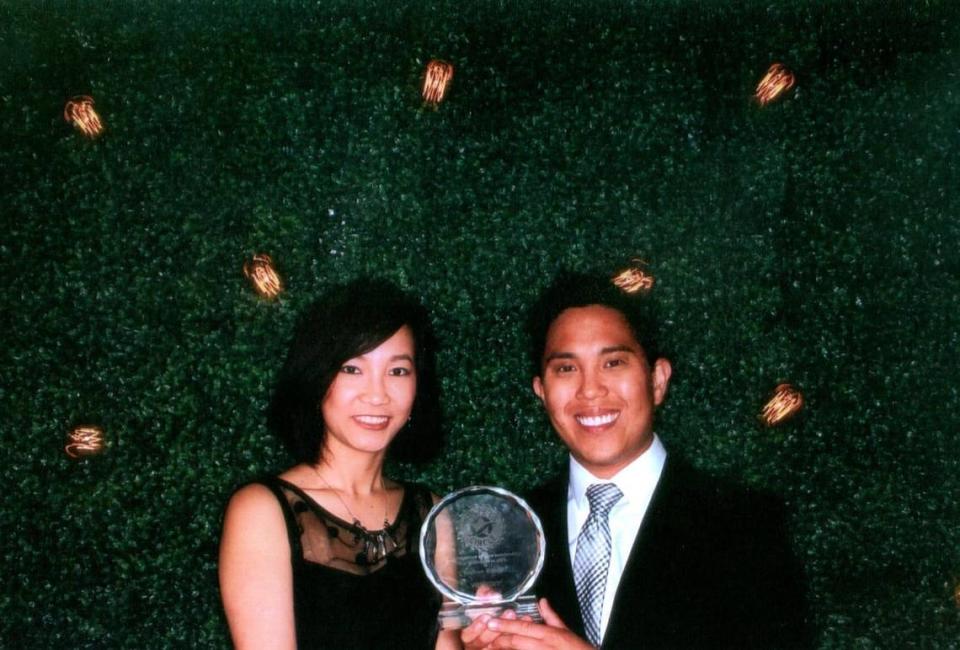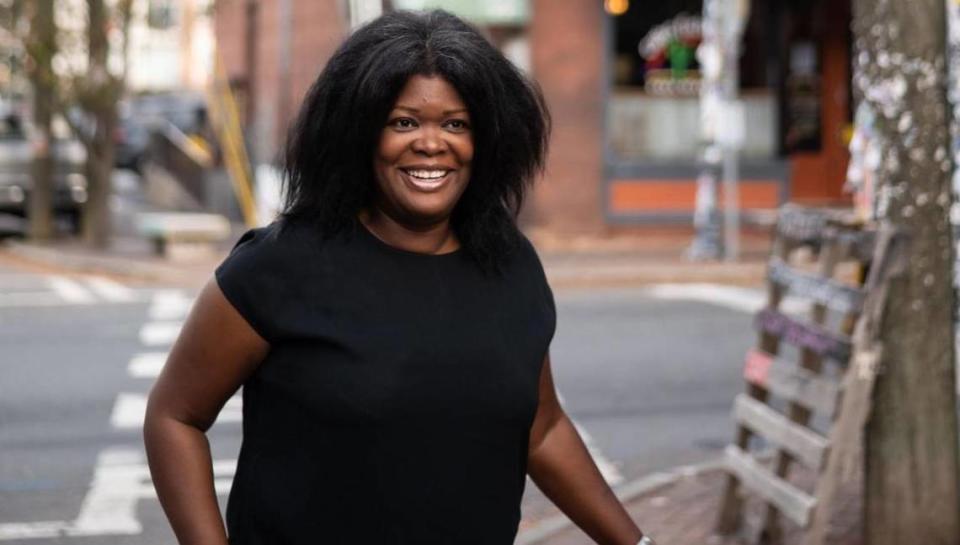4 neighborhoods are being called the Mill District, and not everyone is happy about it
It’s no secret that Charlotte prides itself on its neighborhoods, specifically the individuality of the neighborhoods its residents all know and love. Both history and culture are threads that run deep in all of the historic neighborhoods throughout the city.
There’s the working-class history of the Optimist Park-Villa Heights-Belmont area, which resulted in the advancement of Charlotte as a leading textile producer in the late 19th century and early 20th century. Then there’s the rich culture of NoDa, which is also known as the Arts District.
This week, the four neighborhoods — NoDa, Villa Heights, Optimist Park and Belmont — officially unite to move forward under the name the Mill District — a nod to the textile mills that transformed the Queen City.
The seven mills — Alpha Cotton Mill, Highland Park Mill No. 1, Louise Cotton Mill, Highland Park Mill No. 3, The Mecklenburg Cotton Mill, Johnston Manufacturing Co. and Chadbourn Mill — remain in existence today, as some have been transformed into apartments, lofts, office space and the well-known Optimist Hall, which includes food stalls and retail shops.
The neighborhoods will continue to retain their individual identities. Each of the four neighborhoods included in the Mill District have both shared and individual goals, former president and current board member of NoDa Neighborhood and Business Association Jacob Horr told CharlotteFive. Maintaining individual identity coupled with the power that comes along with being together is one of the goals.
“We started talking about that and all of the history that has been cut out of Charlotte in general and the fact we have a shared history that dates back to the 1900s in all the mills and the mill homes,” Horr said. “The mill villages created the businesses and the beginning of the live, work, play environment, essentially.”
The Mill District’s goals include creating a collective identity, collaborating and supporting each neighborhood while sustaining individuality, building awareness of the area as a place to live, work and play in the Queen City and educating the community about the history of the area, as well as the present and future.
“This isn’t just about telling the story of the past,” Horr said. “There’ve been multiple variations of these neighborhoods — good, bad and ugly — that tell that entire story (and) people understanding what came about, which was really an igniter of Charlotte’s economy in general were around these old mills.”
“I’m a believer you kind of have to slowly introduce people into history,” Horr said. “You can’t throw a lot at them. There’s a lot of history and policy and how we ended up where we are. All of that needs to be shared. You have to get people to understand that there is history to share, then help them to continue to sort of peel back the onion to the rich history this area has.”

Education started with distributing literature such as pamphlets, brochures and information in the neighborhood’s community newspaper, NoDa News, about the mills, mill villages and detailed information about local businesses in the area.
Now, more than ever, people are willing and want to talk about the good and bad, Horr said. How they have played into or where their ancestors have played into where we are as a people is even more important as the city is looking to plan out its growth for the next 20 years.
“This starts the conversation to be able to do it,” Horr said. “So, we’re really excited to continue to tell the entire story of what this area has, as well as working together to define what we want this area to be in the future.”
History, business and community, outreach
Local businessman Don Do, who owns Mimosas Nail Bar in NoDa, has been included in the project since the start, helping with thoughts regarding design and providing feedback.
“We’re extremely excited. If you look at everything, the whole entire project has to do with three major points which is history, connecting businesses in our community or people and outreach.” Villa Heights board member Do said. “You look through the history, the mill district is responsible for one of the first major booms in Charlotte’s history with the seven different mills. The first working class neighborhoods of Charlotte, but it wasn’t just a neighborhood. If you look at it it was a community.”

Do and his wife opened their business two years ago in what will be known as the Mill District because of the community and its history.
“It was a walking neighborhood with schools, grocery stores and soda shops where people were friends and community,” he said. “What makes us so excited is we want to use this to continue that by connecting our businesses and community.”
‘It may conjure tough memories’
The plan for the Mill District has a goal of uniting, collaborating and bringing people together. Some residents and community members have concerns about a lack of inclusivity and the name that was chosen to brand the community, however.
Former Optimist Park resident Boris Henderson’s mom worked in the Highland Park Mill No. 1 — now Optimist Hall. Almost all of the workers were Black, he said. His mom walked to work and put in her time, and he witnessed how difficult the work was for her.
“People have different experiences and different reactions to what it means for something to be branded as a mill district,” Henderson said. “For folks who have been over in that area for decades and decades, it may conjure tough memories of having to work long hard hours for little pay to support their families. For newcomers, the Mill District could be hip and trendy. I don’t think it reflects the collective voice of the community over there.”
Henderson — who lived in a habitat house in the neighborhood — moved to Optimist Park when he was 11.
Back then, the neighborhoods were impacted by high poverty rates and higher crime rates than what you would associate with those areas now, Henderson said. For the most part, most of the people who lived in those areas were Black.
“You fast forward to today, the housing stock has significantly changed, the demographics have changed due to gentrification, it’s happening,” he said. “It has happened in those areas. Americans want to live in walkable communities and closer to where they work, so I think all of those forces have shaped the neighborhoods over time.”
“There’s still folks who moved into Optimist Park 30-40 years ago,” Henderson said. “They are mostly seniors, but they are still hanging on in those areas. They are still trying to figure out how to pay those property taxes and to stay in neighborhoods they closely identify with.”
While people try to embrace the changes that have been and are soon to come, the decision-makers should be mindful, he said. The voices of those who have been in the community for decades should be a part of the conversation.
“We really need to make sure we’re very mindful of creating and maintaining community, which means we have to have conversations with people who may not have the resources to speak up when their voices need to be in the room and they may not be aware,” he said. “Charlotte is a dynamic and growing city. It’s changed, but we can’t forget those whose backs the city was built on.”
Some Belmont neighbors told CharlotteFive they were not even aware of the Mill District name until Tuesday evening, when a representative attended the Belmont Community Association meeting to ask for feedback on the idea.
‘A name connects our identity’
Nearly all of Charlotte’s early 20th century neighborhoods had white-only deed restrictions during the 1900s-1940s, local historian Tom Hanchett, who has studied Charlotte’s neighborhoods, told CharlotteFive in an email.
Both Belmont and Villa Heights were built during the Jim Crow era, meaning only white residents were moving in during this time.
After the neighborhoods were desegregated, many residents from Charlotte’s thriving Black community, Brooklyn, were displaced from the neighborhood (now known as Second Ward) in the name of urban renewal. By 1968, more than 1,000 families had been forced to leave Brooklyn, and many moved to Villa Heights.
Several of the children grew up to be older adults and seniors who still live there, said former Villa Heights Community Organization board president and resident Angela Ambroise, who has lived in Villa Heights for 15 years.

After Jim Crow, residents in these neighborhoods were allowed to work at the mills. This wasn’t a sunny moment in history, however.
“We didn’t have regular blue collar worker jobs,” Ambroise said. “The few Blacks that would get hired at the mill worked the most menial jobs. This isn’t a history for us to be celebrating for me. I feel like they aren’t telling the whole story.”
When deciding to rebrand an area, it would be ideal to examine blind spots to make sure everything is really working for all stakeholders, she said. “A name connects your identity. It connects to your history. And, I think it’s important to a lot of our elders,” Ambroise said.
“In a perfect world, they would come back and re-evaluate,” she said. “What should we call this? Do we attach it to the Mill District? Do we say something like the ‘New Mill District?’ Do we include the history, talk about the history of everything over here?”
Get our newsletter
Sign up now to get CharlotteFive in your inbox daily.
Correction: Belmont and Villa Heights were built during the Jim Crow era. A prior version of this story had an incorrect date.

 Yahoo Movies
Yahoo Movies 
